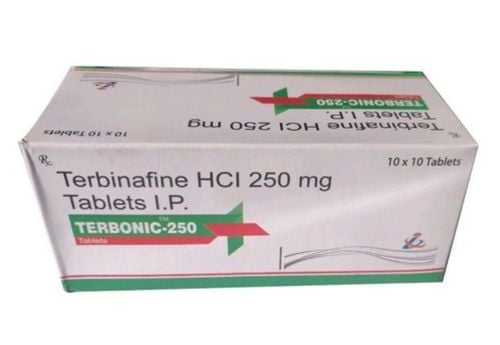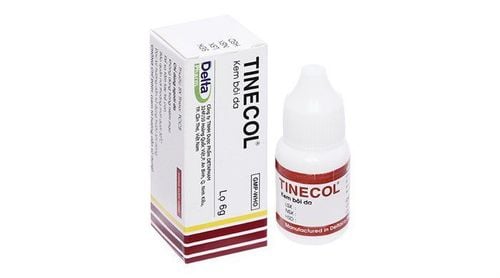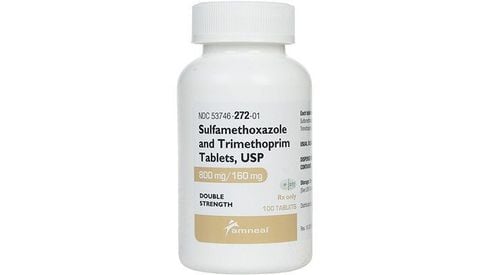This is an automatically translated article.
Yellow nail syndrome is a rare condition that affects your fingernails and toenails. People with this type of nail disease may also have lung and lymphatic system problems, as the accumulation of lymph under the nails causes them to appear yellow. The disease can occur at any age but is most commonly seen in people over the age of 50.1. What are the causes of yellow nail syndrome?
The lymphatic system is the part of the immune system that carries lymph, a colorless liquid with infection-fighting immune cells, throughout your body. Problems in the lymphatic system can cause a buildup of lymph. This leads to swelling under the skin in various parts of the body, one of which is yellow nail syndrome.Accordingly, it is most commonly seen in people with the following:
Conditions that cause problems with the circulation and drainage of lymphatic fluid such as lymphedema Certain cancers such as lung cancer, cancer breast cancer and lymphoma Autoimmune diseases Immunodeficiency disorders such as common variable immunodeficiency and nephrotic syndrome, which affect immune cells There are changes or mutations in genes FOXC2, which causes swelling in the legs, known as lymphedema syndrome Exposure to metallic titanium in dental implants or joints, medications with titanium dioxide, or harmful environments
2. Manifestations of yellow nail syndrome like?
The telltale signs of yellow nail syndrome are nails that change color or become yellower and a buildup of lymph under the skin. Other yellow nail syndrome symptoms include:Fingernail and toenail dysplasia that causes the nail bed to become curved, separate from the nail bed, thicken, or stop growing Cuticle loss Bronchiectasis, a condition damage to the airways or bronchi of the lungs Lymphatic hypoplasia (underdevelopment of the lymph vessels) Lymphedema or leg swelling caused by a buildup of lymph under the skin Pleural effusion or fluid accumulation in the protective layer of the lungs Chronic sinusitis or inflammation and sinus infections Chronic cough Respiratory problems Respiratory tract infections such as pneumonia In addition, yellow nail syndrome can increase the risk of developing an infection in the surrounding tissue. around the nail.
3. How is yellow nail syndrome diagnosed?
Your doctor will diagnose yellow nail syndrome based on a trio of specific symptoms that occur at the same time, including the observation of yellow fingernails, lung problems such as chronic cough, and bronchiectasis with swelling or lymphedema in the lower extremities.If you have all three of the symptoms listed above, your doctor will do tests to check that your lungs are working properly and check for swelling in your legs to confirm the diagnosis.
4. Does yellow nail syndrome cause any complications?
Yellow nail syndrome is associated with symptoms that affect the lungs and cause serious complications later. Lung problems like bronchiectasis affect the airways of the lungs, causing mucus to build up. This can cause infections such as pneumonia.Also, if fluid accumulates in the pleural space, you may develop a pleural effusion, which can further complicate the condition. In people with lymphedema, cellulitis (or swelling of the skin, often in the legs) can make it worse.
5. How to treat yellow nail syndrome
There is no cure for this nail condition. To date, treatment of yellow nail syndrome includes the following steps to treat specific symptoms:Use oral vitamin E and the antifungal drug Triazole to treat nail changes Corticosteroids to relieve symptoms Decompression or surgery to treat pleural effusion Antibiotics to treat sinusitis, mucus production associated with bronchiectasis or lung infection Less elastic bandages, elastic compression stockings, cool Distance and exercises to improve circulation and treat leg swelling Manual drainage of fluid from areas of lymphatic buildup Specific medications to treat underlying conditions such as cancer or rheumatoid arthritis
6. Can yellow nail syndrome be prevented?
Yellow nail syndrome can't always be prevented, but the symptoms can be easily managed and treated with knowledge.Accordingly, if you notice any serious symptoms, consult your doctor immediately for proper diagnosis and treatment.
In summary, to date, while there is no known way to prevent yellow nail syndrome, symptoms can be controlled with medication, fluid removal, and vitamin and anti-inflammatory supplements. As lymphatic drainage improves, nails can return to their normal color. However, because lymphedema can become a chronic condition, some people with this nail disease may need ongoing treatment to control swelling and long-term fluid buildup.
Reference sources: healthline.com, webmd.com
Please dial HOTLINE for more information or register for an appointment HERE. Download MyVinmec app to make appointments faster and to manage your bookings easily.













